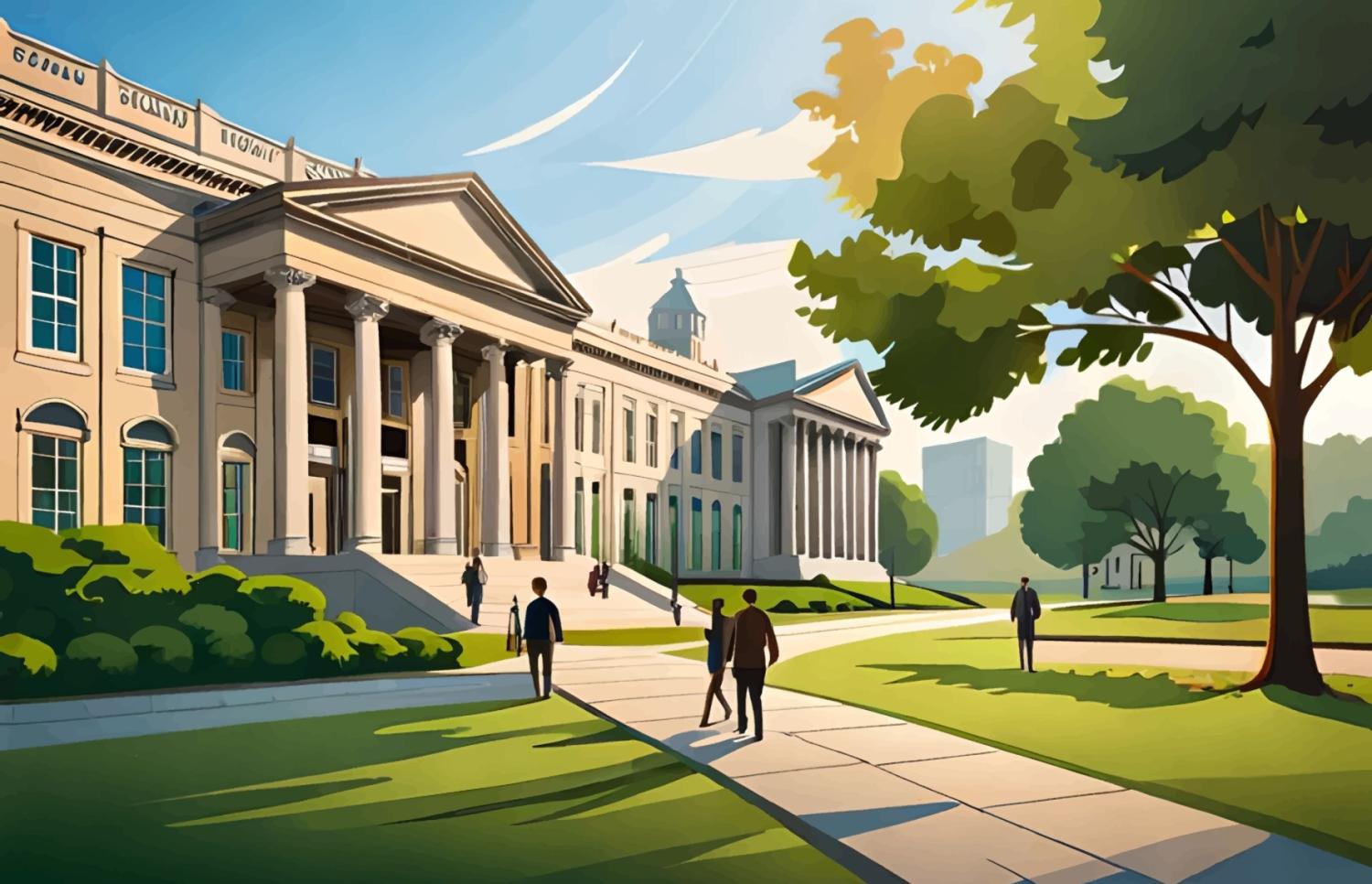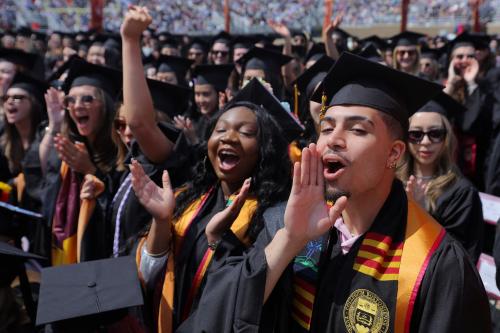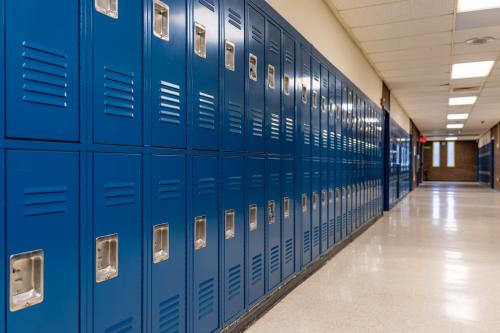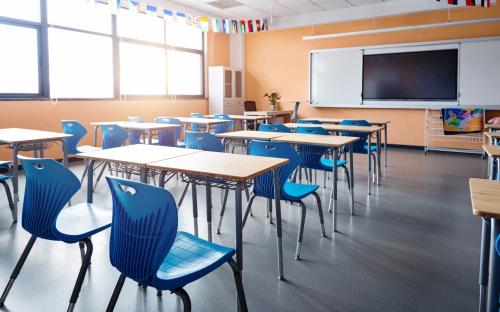Colleges and universities in the U.S. are facing some strong headwinds on enrollment figures, forcing some tough conversations. Inside Higher Ed recently published an article under the headline “Report Finds Higher Ed Sector Shrank by 2 Percent” along with the accompanying subhead “Data from the National Center for Education Statistics shows that nearly 100 institutions closed between the 2022–23 and 2023–24 academic years.” The term “enrollment cliff” gets thrown around a lot in higher education circles lately, and this article seems to offer some confirmation of those anxieties. But does the news call for panic?
After reading up and doing some of my own analysis, I’m going to argue that the closures we’ve seen to date are relatively small for the traditional higher ed sector as a whole, although of course they are very tough for those personally involved. But I’m also going to argue that there are underlying trends which may be very disruptive in the coming decade.
In the end, I will suggest that worry about college closures is largely misplaced. Worry about uneven enrollment trends and the accompanying elimination of programs at some schools is where the concern should lie.
In this discussion, I mostly concentrate on four-year private, nonprofit, and public institutions, as that’s what I know best. (For those who may be curious, according to the Digest of Education Statistics, 2020 enrollments in four-year, for-profit colleges were down by about half from their 2010 peak. Enrollment in two-year colleges was down about 40% from its 2010 peak.)
Recent closures are surging, again
Let’s start with a picture of college closures over the last three decades. This appears in Figure 1. The yellow line traces the number of all higher ed institutions, and the two other lines trace the same numbers among two major sector categories, for-profit (dark blue line) and not-for-profit (light blue line) institutions.
The first thing to notice in the figure is that the most recent year has indeed shown a large uptick in college closures relative to during the pandemic, but fewer closures than those observed during the late 2010s (when many for-profits closed in anticipation of losing Pell-grant eligibility due to “gainful employment” regulations). Also, notice that the increase in closures is mostly driven by the closure of for-profit schools. About half the for-profit closures were vocational schools that operated below the associate degree level. In some part, the recent spate of for-profit closures took place in programs that were very similar to the profile of those involved in the pre-pandemic closure spike and might also have failed gainful employment metrics. This serves as a reminder that school closings are not always bad—vocational programs in which graduates don’t find jobs don’t help anyone very much.
The not-for-profit line in Figure 1 shows closures of four-year schools, combining both private nonprofit and public. (About an equal number of two-year schools, mostly public, closed this year, but are not presented separately in the figure.) While the number of closures of four-year schools has increased, so far we are talking about relatively few institutions. It’s also worth pointing out that sometimes when colleges “close,” they actually merge into another, surviving, institution. Depending on the nature of the merger, the damage to students and employees may—or may not—be substantially mitigated. (Harvard seems to have survived its 1999 merger with Radcliffe College.) Among the four-year schools I look at, the two public universities that closed were merged into another institution, while almost all the nonprofit privates closed without a merger. Robert Kelchen documents that “closures” among community colleges are sometimes just administrative consolidations with no campus closures.
Using Department of Education data, I have identified 17 four-year schools that either shut down completely in the last year or merged into another college. Is the closure of 17 schools a very bad thing or even a disaster? Well, it surely is if you’re a student who can’t complete your degree (some closing schools arrange teach-out programs with another college, but the research from the State Higher Education Executive Officers Association is not reassuring). It’s also a tough lot if you’re a long-time faculty member or staff who’s lost your job. Not much fun if you’re an alumnus either.
Figure 2 shows the history of average enrollments for the schools that closed this year.
Two facts are striking. First, the schools that closed last year suffered from declining enrollments for years and were never large. Second, the closed schools were very small—in 2023, average enrollment at these schools had fallen to about 120 students. Nationwide, “only” a few thousand students were affected. Since there are something like 11 million four-year college students, we’re talking about closures affecting fewer than one in a thousand students.
Going forward: Where is the significant risk?
The closures we’ve seen so far just aren’t a big deal—unless you’re unlucky enough to be at one of the places that closed. However, I am less sanguine about the future. The key issue here is enrollment variability. Some institutions are at risk from enrollment pressures, while most aren’t. My institution, for example, receives over 110,000 applications. It’s not at any risk from enrollment declines, nor are other highly selective colleges.
Yet, there are many, many colleges that are quite small and not very selective and therefore at real risk from enrollment drops. The typical college in the United States is neither a football power nor a research factory. Half the colleges in the U.S. enroll fewer than 2,200 students. In fact, nearly a third of U.S. colleges enroll under 1,000 students. Some of these places are vulnerable.
Most private colleges survive financially on tuition. Public colleges also receive substantial state support of course, although sometimes the level of support also depends on enrollment. Despite public impressions, endowments really only provide major support at a few schools. If you look at all the college endowments in the country, six percent is at one school, 20% is held by the eight Ivy League schools, and half the national total is held at just 24 schools. For the vast majority of colleges, endowments provide a margin of excellence—but endowments don’t support the school.
But for the one-third of four-year schools with enrollments under 1,000 students, most have no endowment to tide them over any tough times. This means that going forward, there are a large number of schools vulnerable to small swings in enrollment.
This is particularly concerning since forecasts project a decline in the total number of high school graduates in the coming years. Nationwide, the Department of Education projects about a five percent drop in the number of new high school graduates by 2031. The Western Interstate Commission for Higher Education forecasts a 12% drop by 2037. High school graduates are a leading indicator of subsequent college enrollment trends; though college-going rates have risen a little in recent years, it is not enough to counter the growing decline in high school graduates. So it’s very likely that there will be a modest drop nationwide in candidates to start college.
However, there is enormous geographic variation in these demographic trends. Consider the four states with the largest populations. The Department of Education forecasts about a 10% increase in the number of new high school graduates in Florida and Texas through 2031. If Florida and Texas ever face college enrollment difficulties, it won’t be because of a lack of potential entrants. As contrasting examples, deep drops in high school graduates—on the order of 15%—are forecast for California and New York. Similar drops are forecast for several other states. Even if the national drops are not of great concern, there are clearly some states where some advanced planning is called for.
What’s being missed: Program closures are the real risk
Most colleges are at no risk of closing, though some small schools and schools in some states may well be at risk. I suspect the real issue is going to be program eliminations and accompanying reductions-in-force as some schools downsize or rightsize even as others are growing. As an example, Inside Higher Education has a good story on program cuts in 10 universities in August alone and a story in September documenting cuts at another nine schools.
Even some of the nation’s most successful universities have undergone recent program closures. The Pennsylvania State University reduced employment by 10% at its regional campuses this spring as enrollment fell about 20%, even while enrollment at the flagship Penn State campus grew. Last year, West Virginia University, the state’s flagship school, announced cuts of 28 programs and elimination of 147 faculty positions. WVU’s enrollment has been more or less flat for the last five years, but is down about 16% over the last decade. The University of Wisconsin-Milwaukee is closing its College of General Studies and removing 32 tenured faculty, having also seen about a 16% enrollment drop over the last decade. Most recently, St. Louis University has announced the need for large budget cuts in the face of a massive drop in international enrollment, which disproportionately contributes to tuition revenues.
There’s no single narrative or overall trend that perfectly describes the future of college enrollment. Colleges vary in their size, selectivity, and institutional resources and face different levels of threat from demographic shifts across the country. While college closures are hard for the students and employees of those institutions, it’s probably program eliminations within colleges that are likely to be the bigger story in the years to come. That’s something we don’t know a lot about yet.
The Brookings Institution is committed to quality, independence, and impact.
We are supported by a diverse array of funders. In line with our values and policies, each Brookings publication represents the sole views of its author(s).







